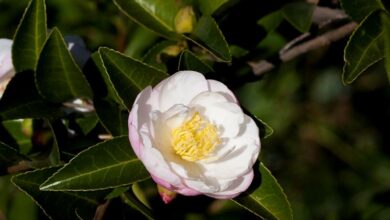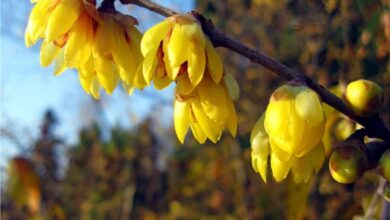Lotus flower (Nelumbo nucifera) – Characteristics and distribution

The lotus flower ( Nelumbo nucifera ) is one of the most beautiful flowers in the world , belonging to the genus of the Nelumbonaceae. It is also known as the sacred lotus, Indian lotus, or Nile rose . The beauty and symbolism of this plant have inspired drawings and tattoos from around the world, in addition, it also stands out for its seed, capable of germinating until ten centuries have passed .
In this Friends of Gardening tab we talk about the lotus flower , its characteristics, distribution and care, among many other things.

Taxonomy of the lotus flower
| Kingdom: Plantae |
| Division: Magnoliophyta |
| Class: Magnoliopsida |
| Order: Proteales |
| Family: Nelumbonaceae |
| Genus: Nelumbo |
| Species: Nelumbo nucifera |
Characteristics of the lotus flower
The lotus flower is an aquatic plant with rhizomes that lives in calm waters. It has green and floating leaves, which are also perennial. It is characterized by its large and aromatic white or pink flowers, in gradient, depending on the maturity of the flower. The flowering of this plant occurs in late spring or summer.
Habitat and distribution of the lotus flower
We can find the lotus flower in all kinds of ponds and lagoons that are located around 0 and 400 meters above sea level. We can find it in many countries, such as China, India, Sri Lanka, Vietnam or New Guinea .
Lotus flower care
The lotus flower requires full sun to fully develop and be vigorous. It should be planted in the mud, horizontally, at a minimum depth of 60 centimeters .
Its flower is also its fruit and can be grown by seeds or by multiplication of rhizomes. The longevity of its fruits is very popular, since it has been possible to germinate seeds of up to 1,300 years .

Properties of the lotus flower
The lotus flower is a plant appreciated in traditional medicine, being able to take advantage of all of it:
- The root contains alkaloids and is appreciated for increasing the body’s defenses.
- The leaves, for their part, also rich in alkaloids, have a relaxing, antibacterial and astringent function .
- Its flowers contain glycosides and other enzymes that have an anti-inflammatory action on the mucous membranes.
- It is highly appreciated for being a natural remedy for its multitude of properties for coughs, mucus, nerves, hypertension and insomnia among others.
- Formerly it was consumed as an infusion or smoked to «cheer up» the body and mind. Its rhizomes and seeds can be eaten toasted.
Meaning of the lotus flower
The lotus flower is a venerated plant for many cultures such as Buddhism, and even being considered sacred in other religions. The lotus flower is born from the marshy waters, it is like a symbol of purity and beauty emerged from the mud and that rises towards the sun, full of humility.
It is the national flower of India where it is considered sacred and symbolizes knowledge, fertility, wealth, enlightenment and divinity.
In Chinese culture, the lotus flower has a meaning of divinity , in the New Year its seeds are eaten with sugar and, if the wife finds the seed in the sweet, it means that she will be a mother the following year.
In ancient Egypt the lotus flower is very significant since many gods came from it , including Ra, god of the sun, since the flower only opens during the day, which for them had a symbolism of resurrection. Nefertum, god of perfumes, also came out of the lotus, which provided a great aroma to all Egyptians.

SEE MORE PLANT SHEETS




